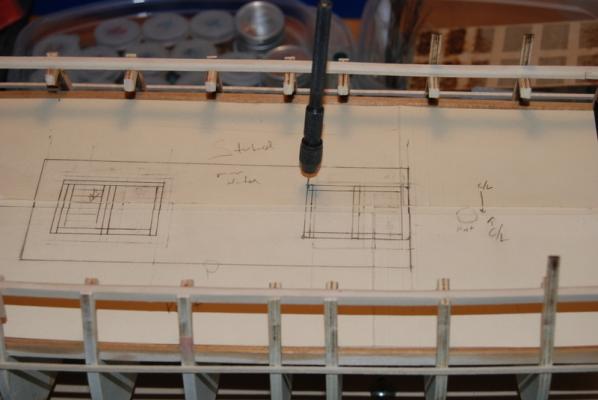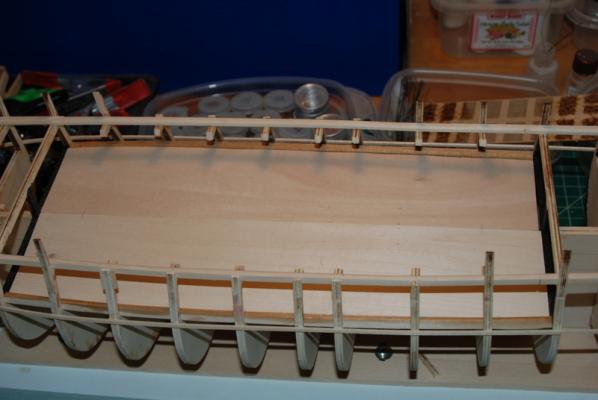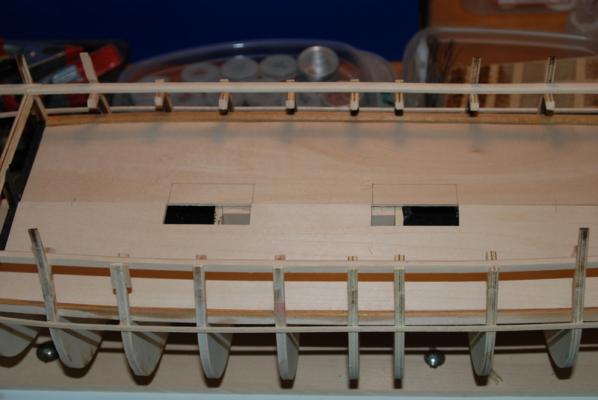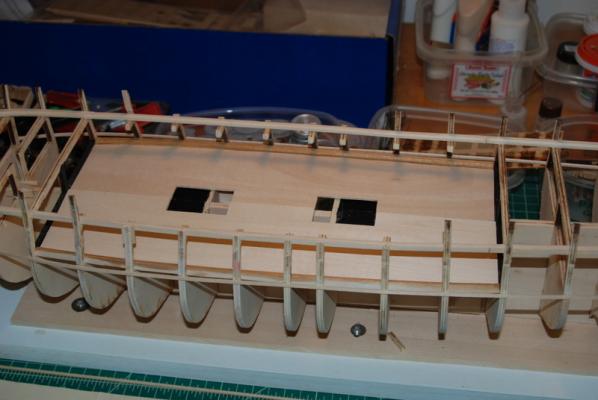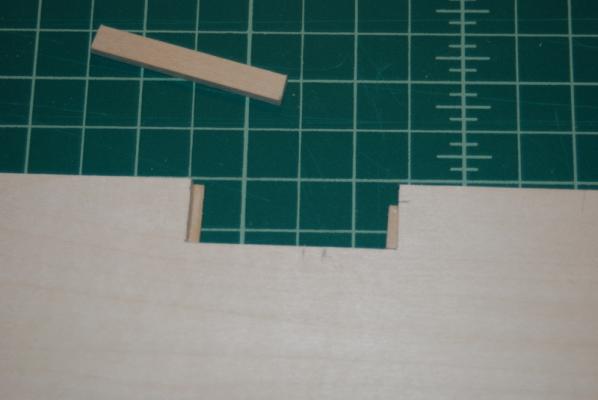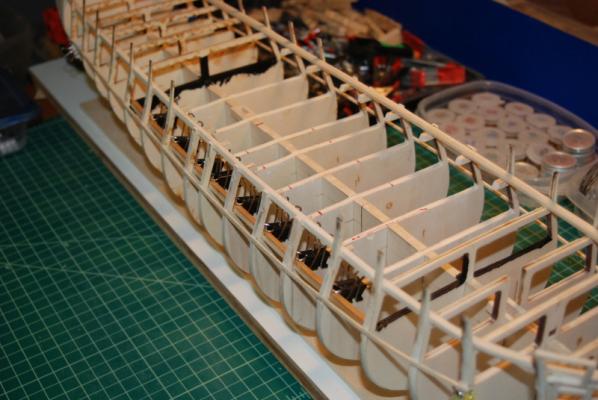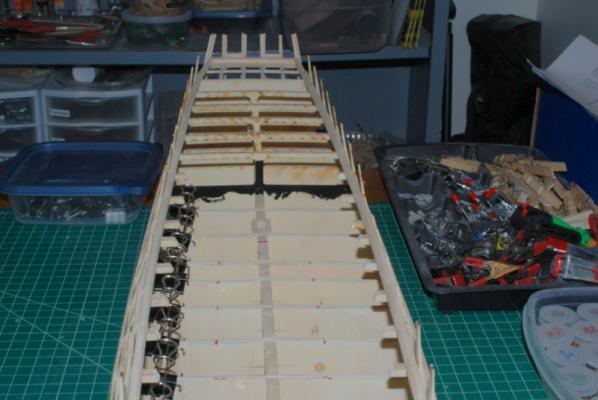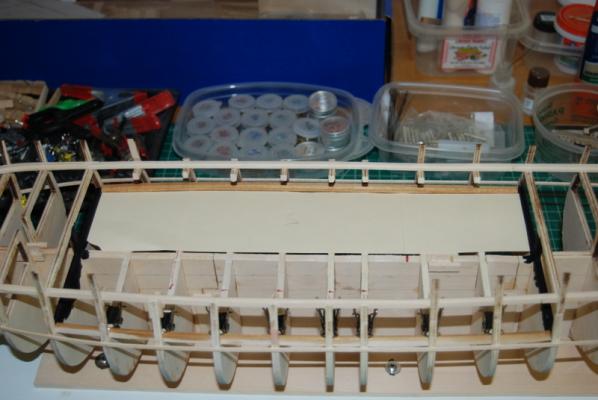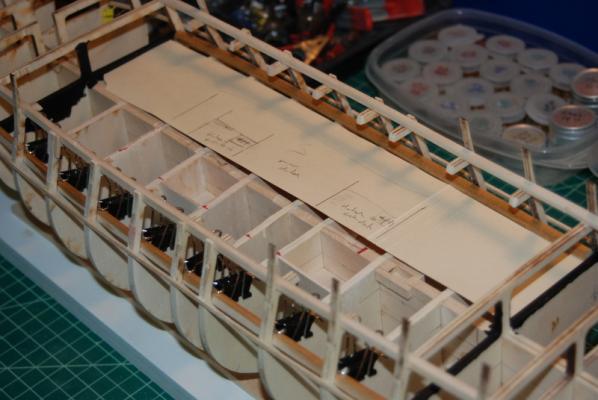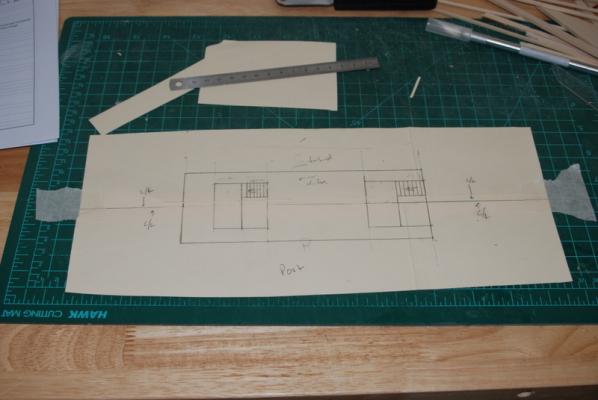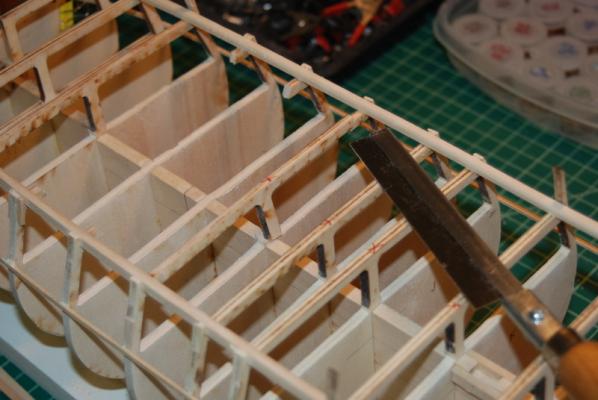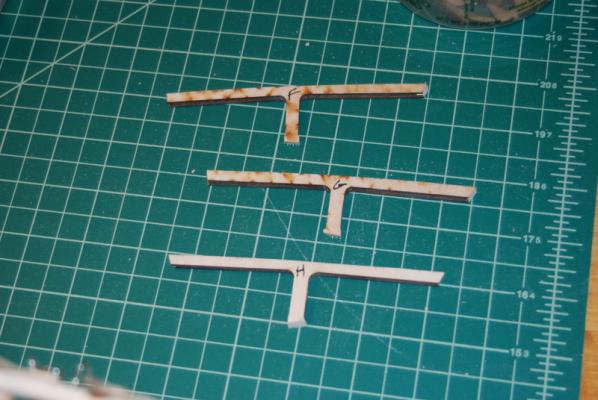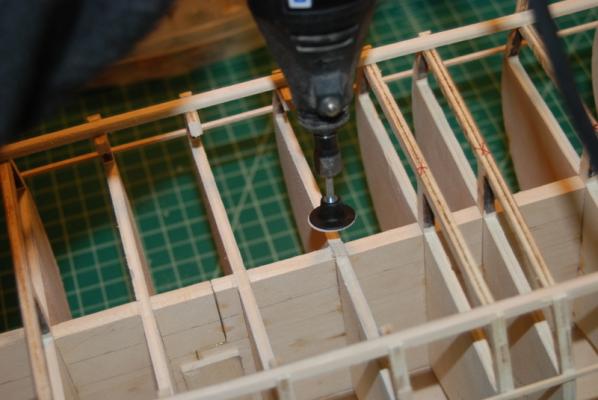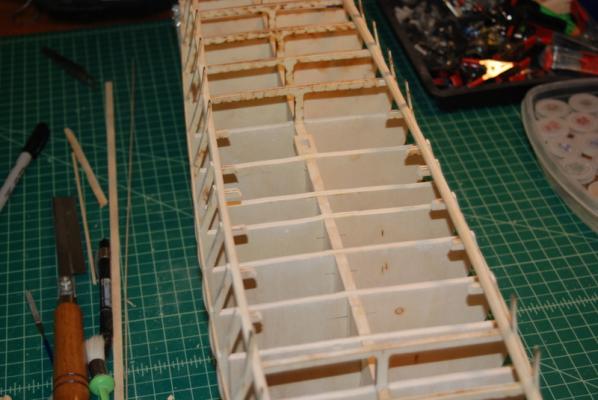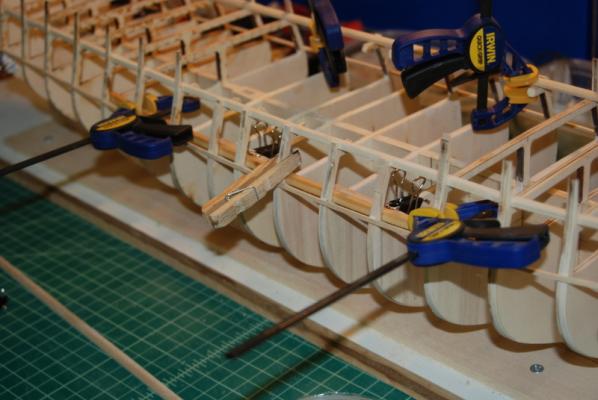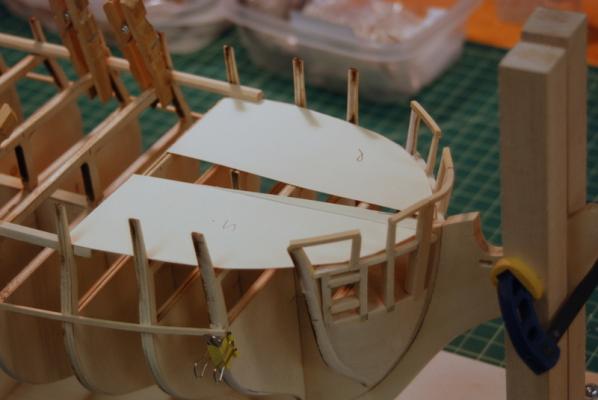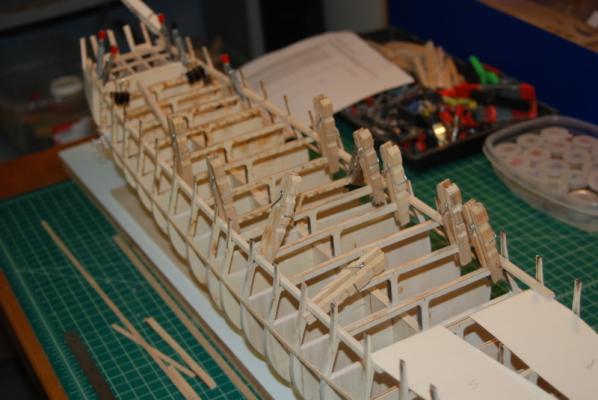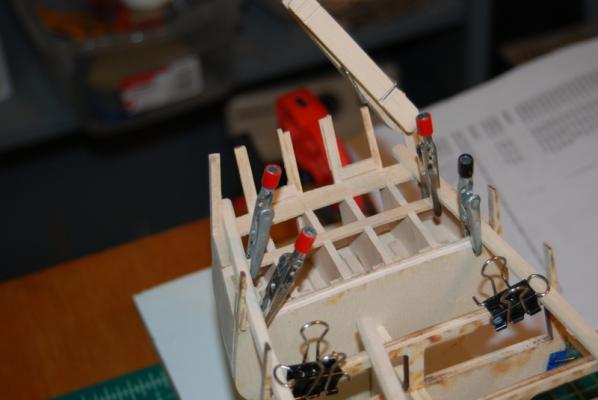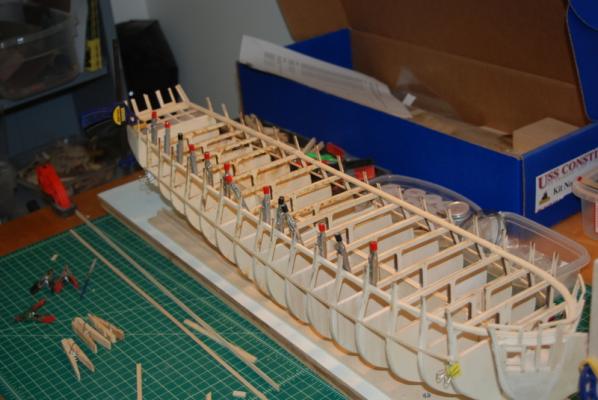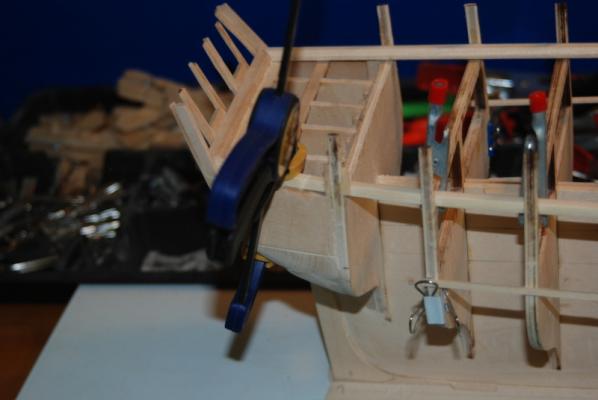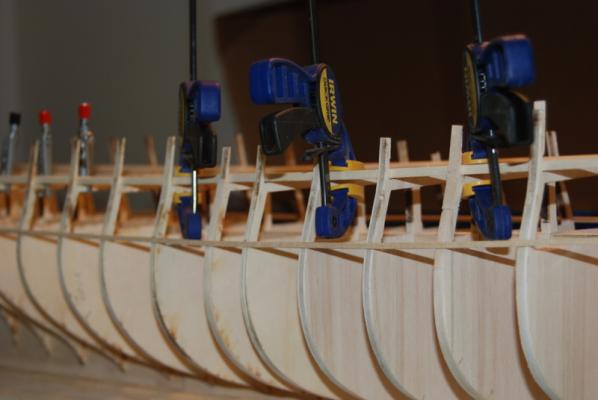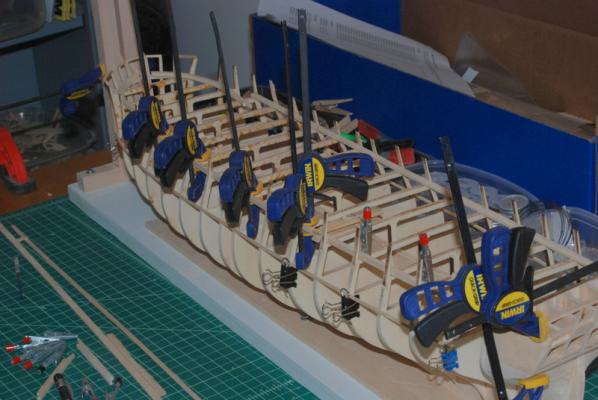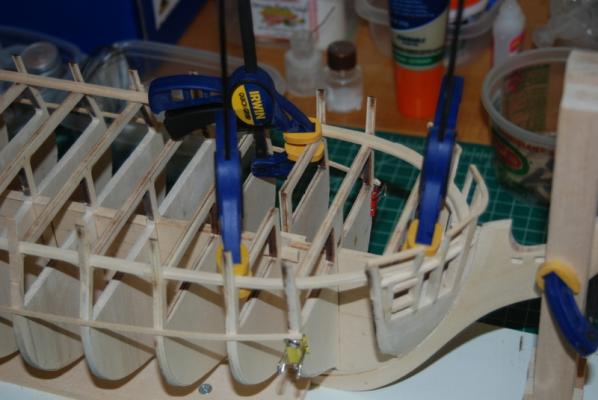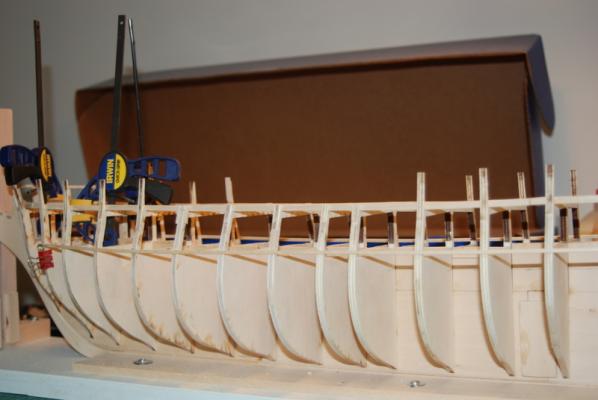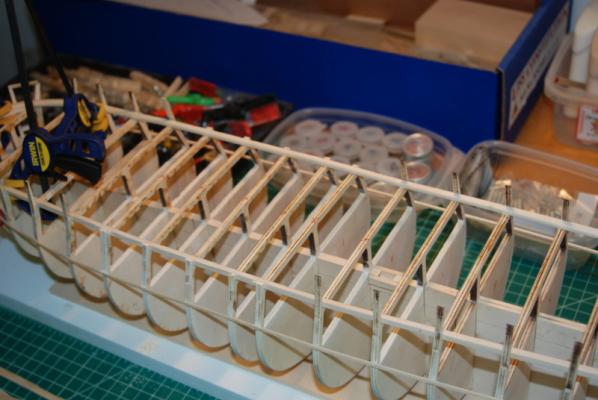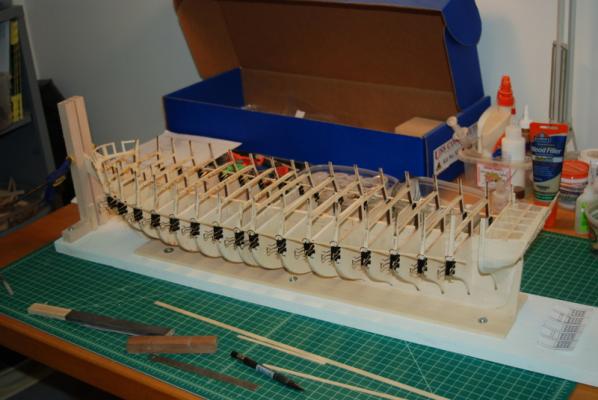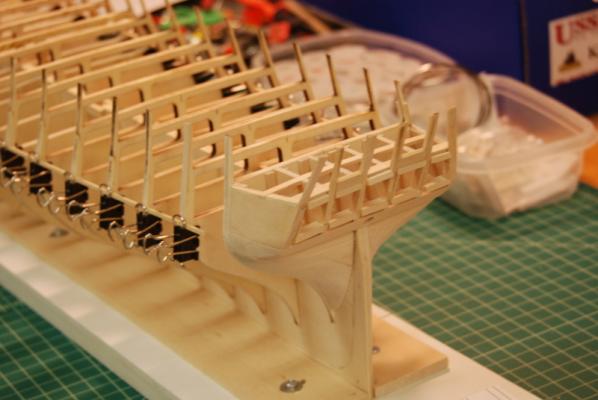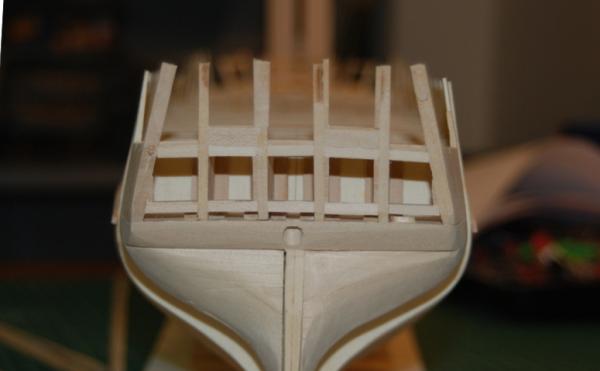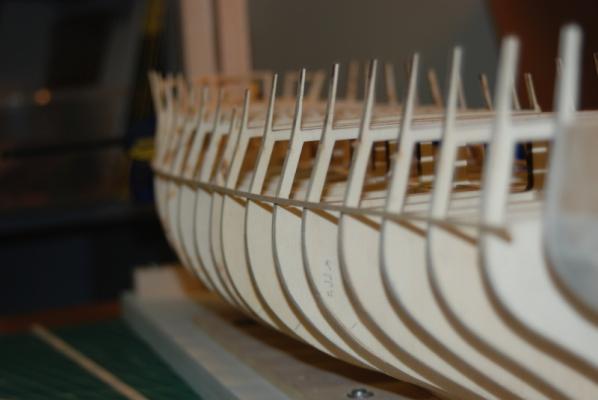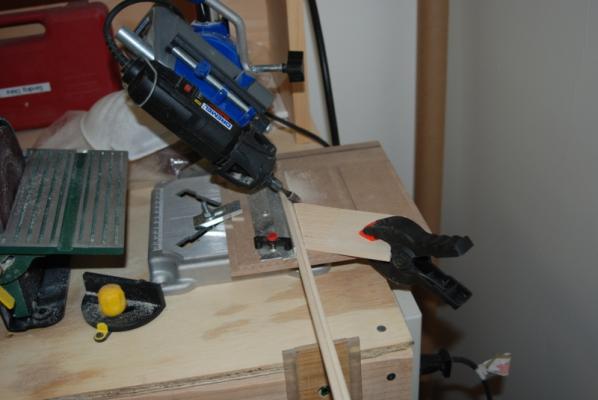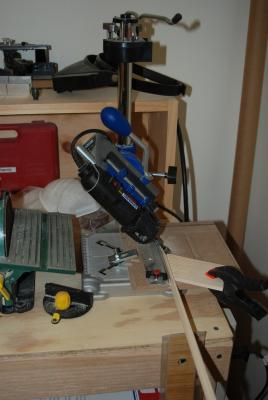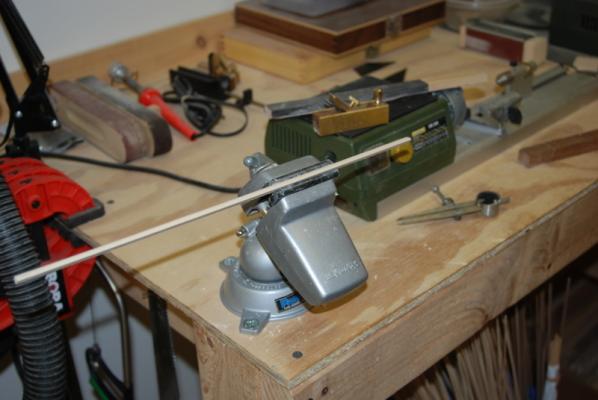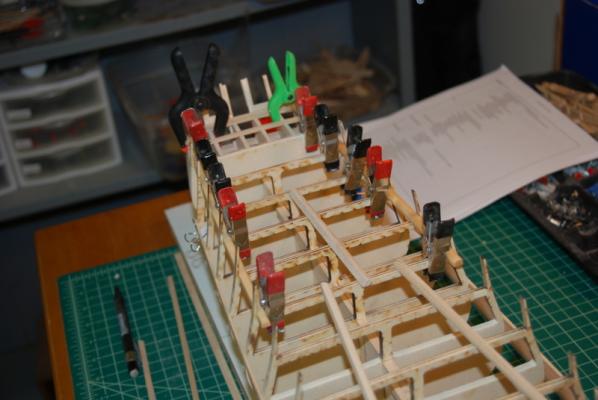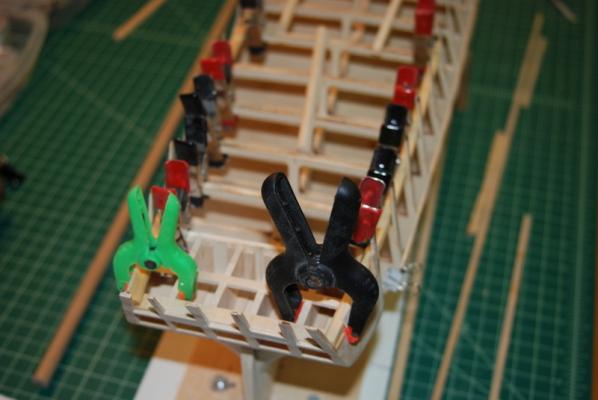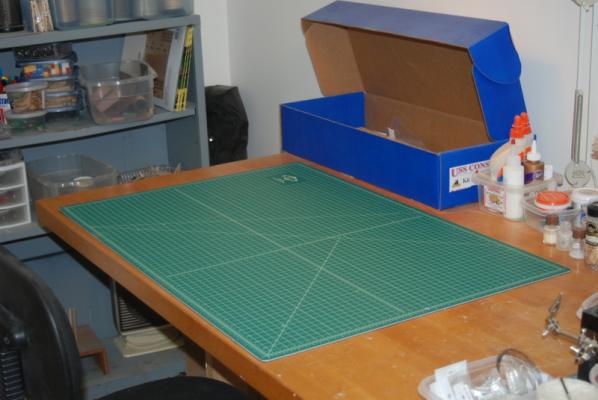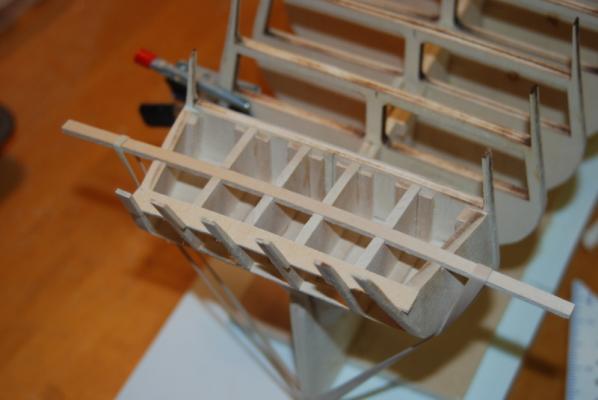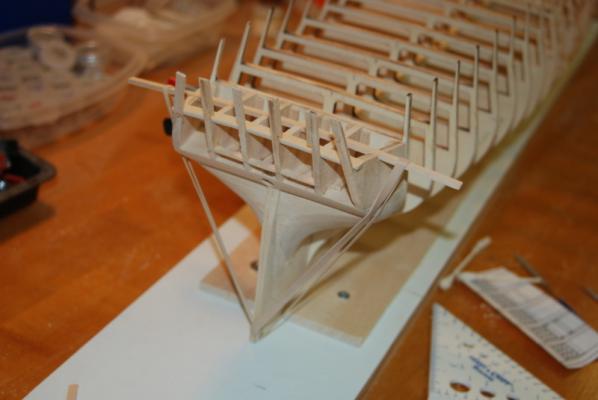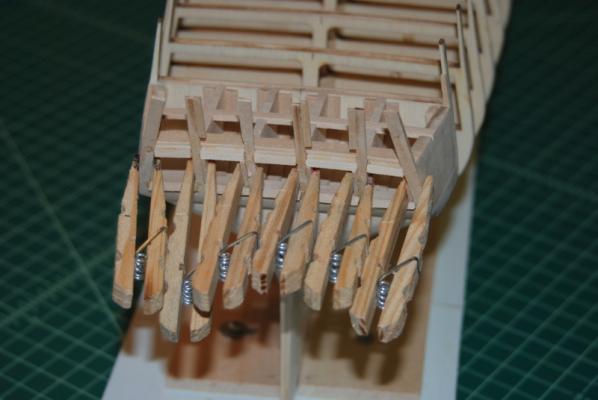-
Posts
2,409 -
Joined
-
Last visited
Content Type
Profiles
Forums
Gallery
Events
Everything posted by usedtosail
-
OK, where did we leave off? Oh yeah, getting the hatches from the gun deck to the berth deck more accurate. Here is a snippet of the plan that I was referring to from the CD and Constitution web site: So, I updated the gun deck template to this configuration. I was able to tweak these to use three of the large hatch gratings from the kit that would have gone over the main hatch, but since I am leaving that one open, I can use them here. I had to add some more boxing between the bulkheads to accommodate the new ladder location, which I painted black. I then used the templates to cut out the gun deck base, which I made in two pieces to fit around the spar deck beam ends. I cut them to length first, then cut the edges along the waterways and sanded them to get a nice fit. Once I was happy with the fit along the waterways of the two pieces, I cut them to meet at the centerline: Now it was time to cut out the hatch openings. To mark the hatch locations, I placed the base pieces and the templates into the hull, then drilled small holes at the corners of the hatches and where they met the centerline: I took the deck pieces out of the hull, drew lines between the holes, and cut the hatch openings out with an X-Acto knife. I gave the edges a little sanding, too: I wanted to make the hatch coamings for these so that when I plank the deck I can get a good fit at these openings. To support these coamings, I glued some tabs around the hatch openings, avoiding the bulkheads and center keel: .
- 1,350 replies
-
- constitution
- model shipways
-
(and 1 more)
Tagged with:
-
So true, Patrick. Sounds interesting. I know I have seen descriptions of some of the differences between 1797 and 1812, but I don't remember where.
- 1,350 replies
-
- constitution
- model shipways
-
(and 1 more)
Tagged with:
-
Wow, I go away for a couple of days and miss a bunch of traffic on my own build log . Evan - thanks for providing the information regarding the CD to Patrick. I ended up downloading all of the material from the site so I have it on my computer not on a CD. I went through and renamed the drawings so I can find things easier, although there is an index of sorts. Shnokey - that is a great looking transom, and very much what I was thinking. I don't have a CNC machine, but will try to do something like that by hand, although not in relief. Is that a furnished captain's quarters on the other side of the windows? Just fabulous. Patrick - no worries. Make yours as similar as you like. It is very flattering to me. Maybe we can exchange some ideas as we go. It would be a lot easier to build to the AOS book, but as others have pointed out it may not be very accurate. The plans and photos on the CD (or web site) are very different but to me may be more accurate for the 1812 period, although as Evan pointed out they are from the 1920's.
- 1,350 replies
-
- constitution
- model shipways
-
(and 1 more)
Tagged with:
-
Thanks Steve. I am excited to be able to add this level of detail, especially on a model of this size, even if most of it will not be that visible. I glued in the gun deck waterways after staining them with golden oak: And here are the spar deck waterways. They add support for the bulwark extensions, which is why I waited until they were glued in before cutting the bulkheads: I then made a template for the gun deck base, which I will be cutting out of 1/16" basswood sheet. I need to make this base in two pieces because I wouldn't be able to get one piece past the beam stubs. I will cover the seam with the center plank. I used a compass to trace the curve of the gun deck waterways onto some manila folder: I then marked the locations of the two hatches that lead down into the berth deck. I took these from the AOS, but later I looked at the plans on the Constitution CD, which are a little different. I will be modifying them to match those plans. I did box in a few places where I was going to add ladders, but not all these will be used now. I will paint these boxes black to hide them. Thanks for the interest and the Likes.
- 1,350 replies
-
- constitution
- model shipways
-
(and 1 more)
Tagged with:
-
I did mine in one piece, but I don't remember how long. 4.5" seems about right. My success rate was about half at first. I soaked them for an hour or so then used a plank bender, which is a soldering iron with a larger tip. I had to heat them for quite a few minutes before they would even start to bend, but once hot enough they would go. Then they would stop bending, so I would resoak them for 30 minutes or so and heat them again. In a lot of cases they would go back to be straighter, but once heated again would bend back to where they were, then could be bent more. I took it very slow but still managed to break a lot.
- 625 replies
-
- bounty launch
- model shipways
-
(and 1 more)
Tagged with:
-
Welcome g. I hope you are going to start a build log when you start your Connie. I'd like to follow along. Following other builds on this site is the only way I would have attempted so much kit bashing. Thanks Patrick and Steve. Your builds are coming along nicely too.
- 1,350 replies
-
- constitution
- model shipways
-
(and 1 more)
Tagged with:
-
Thanks Patrick and Tim, and all the likes. Tim, those pictures are great. That stern looks very much like the Hull model. I will look at those closely as I design the stern on mine. OK, so tonight was the big surgery to remove the spar deck beams in the main hatch area. I am going to leave the hatch open, which means I need to add a gun deck. I removed the beams by first cutting the center supports at the bottom using an X-Acto saw blade. I then cut the deck beams using a razor saw to start and the X-Acto saw to finish the cuts. I cut these on an angle so that I can mate the new deck beams to these stumps later. These joints will be hidden under the deck planking so won't be seen (at least won't be seen easily). I marked each of the removed sections and put them aside to use as templates later for the new deck beams. Since these new beams will be showing, I will make them from solid wood, not the plywood of these beams. I ground the stumps left from the center supports using a sanding disk in the Dremel. Here is the area with the deck beams all removed. I soaked the starboard side gun deck waterway which I made when I was making the spar deck waterways, and clamped it in place to bend. The clamps on the other side are two bulkheads that I had to re-glue to the spar deck waterway, whcih came loose during the sawing process. Once the waterways are both in, I plan to make a false gun deck from some basswood sheet, which I will plank. I made these waterways higher than those on the spar deck to compensate for the additional height of the false deck. I feel better now that the major surgery is finished and I look forward to working on the gun deck.
- 1,350 replies
-
- constitution
- model shipways
-
(and 1 more)
Tagged with:
-
Ok, think about the planks that will wrap around the bow and the stern. they have to curve, so the outside edges of the bulkheads have to curve to match, so you get contact with the plank across the whole edge of the bulkhead. The plans for the bulkheads show a line on the ones that have to be bevelled. That line corresponds to the edge closest to the bow for the front bulwarks and closest to the stern for the rear bulwarks after you sand in the bevel. Just sand or carve straight from the existing edge to the line. Figure 1-4 in the instructions shows this pretty well. Leave a little extra for final sanding after you have all the bulkheads installed. This is where you will make sure the planks make a smooth run all the way along the hull, which is called fairing. I hope this helps.
-
Well, the soaked and bent waterways held their shape just fine. I did add a strip to the corner of the transom for the ends to fit in, so I re-soaked them and stuck them out the transom to get more curve in the stern. I also soaked and bent the other side pieces to the bulwark supports. While those were drying, I made up two templates from manila folder for the two bow waterways. I used the templates to cut these waterways out from some basswood sheet material, which is actually excess laser cut pieces from the kit. I glued these to some thinner sheets after getting them to shape inside and out, to get them to the same height as the other waterway pieces. I also made the waterways for the gun deck, using the one piece I had left from the kit and another that I had. These will go on when I can get into that area more easily. I cut the miter joints into the transom waterway and the ends of the two side pieces, and scarf joints in the other ends. I cut some of the scarf joints on the drill press with the end mill, but the two in front I had to do by hand. They came out the same in either case, not great, but OK since the pieces will be painted. I will need to practice a lot more before attempting these for wood that is to be left natural. I then started gluing the waterways in. Here are the two starboard side pieces being glued in. Being able to clamp that stern section so it was tight to the transom filler was a huge relief, as otherwise I don't know how I would have gotten that area to stay down. After I took this picture I could see that the middle sections were not being held down tight enough, so I broke out the bigger clamps. Why I didn't start with these I don't know, as they were perfect in not leaving any marks on the wood. And to be fair, here are the port side pieces being glued in. And finally, the bow sections being glued in. OK, here we go on the kit bashing part. I removed the bulwark supports to show the open waist area, and I have marked the deck beams that I will remove to add the gun deck. The beams will be replaced later with new beams made from basswood strips, as they will be shown in the open main hatch. Tomorrow, I will remove the marked deck beams. I sure hope this works.
- 1,350 replies
-
- constitution
- model shipways
-
(and 1 more)
Tagged with:
-
I finished up the stern framing by adding the bottoms to the chase ports. Since it will be a while before I will be planking the hull, I decided to add some battens to each side, to stabilize the bulkheads: I sanded the stern framing flush: Here is a view down the batten to check for fairness: I then started preparing the waterways. I used my disk sander to sand in the bevel along the bulwark supports: Then I put this crazy set up together to sand in the 45 degree bezel on the top and front of the waterway. It is the Dremel with a sanding drum in the Dremel workstation at a 45 degree angle, with the True Sander underneath so I could use it's fence. I put a finger board in there to hold the strip against the fence. All in all, I probably would have been better just to sand these by hand, but once I started putting stuff together it was fun to see if it would work. I didn't sand in the whole bevel, but enough to get it started. I then put the strip in my vice and set the vice to 45 degrees and planed and sanded it to the final bevel with a sanding block. This method worked but the Dremel put some pits in the face that I was able to sand out. That's why I didn't do the whole bevel this way. I made up the side waterways in two sections and I will connect them with a scrap joint, I think. I have enough overlap that if it doesn't work the first time, I can try again. I soaked the two back sections for about 30 minutes, then clamped them in place to dry. I need to add a post on the inside of the transom so I have an edge to connect these to, as well as the inside bulwark planking. There is nothing on the plans to indicate this, so I am not sure how the inside planking is otherwise supposed to end at the transom. You can't see it, but there is a small block of wood between those large clamps and the waterway to push them over, but I don't think it is enough yet. I may have to resoak and do this again. I'll see tonight how well these held the shape and how much more shaping they may need.
- 1,350 replies
-
- constitution
- model shipways
-
(and 1 more)
Tagged with:
-
I am having trouble with something that, to me, should be obvious. I am building the waterways for the Constitution and I don't know if I should add a section across the stern, at the inside of the transom. The plans don't show it there, but they also do not show the whole waterway anywhere, only a small section of waterway along the side. I went back through build logs and I find some models with it and some without. Of course, I could go into Charlestown this weekend and look for myself, but I thought I'd ask first, since we have so many Connie experts on this site. Since I am asking questions, here is another one. Is the waterway split under the bow sprit or does the bow sprit clear it so it can be one piece across the bow? Again, the plans don't show this anywhere, at least that I have found. I am hoping it is split as the clearance in this area is really tight. Thanks.
-
Mick, I had the same gap in the stern post.
- 625 replies
-
- bounty launch
- model shipways
-
(and 1 more)
Tagged with:
-
Thanks Patrick and Tim. Patrick - your Niagara looks great. I am so going to use that method for the flags on this one. I have never had much luck in the past getting realistic looking flags and that method with the aluminium foil looks good. Tim - Your cross section looks great too. I built the Santisima Trinidad cross section a few years ago, and it was a great introduction to planking and cannon rigging. I get a lot of comments from friends on that model still. I like all the details you have added to each of the decks.
- 1,350 replies
-
- constitution
- model shipways
-
(and 1 more)
Tagged with:
-
Oh, one more thing. I saw one of these large cutting mats in Blue Ensign's build log and thought it was great. It is 36" by 24" and makes a nice flat surface., I found this one Thursday on Amazon for only $20 US, and it was here Saturday. I am so happy with it, I just had to share. Thanks BE for the info on it.
- 1,350 replies
-
- constitution
- model shipways
-
(and 1 more)
Tagged with:
-
This week I have been working in the stern framing. I have the outer transom support pieces in and faired, and added the two deck beams. I left the middle one long so that I could hold it down to the curve of the deck using rubber bands (or as they say here in New England - elastics) I sanded these down to be flush with the support pieces, then started framing the stern windows. I added pieces for the top and bottom frames, then added the side frames. I first used thin (1/16" thick) pieces on the top and bottom frames, but since they were only edge glued to the supports they were not very sturdy (you can see a few of these in the above picture). I replaced them with thicker pieces that I could glue to the transom filler piece on the bottom, but the top pieces are still only edge glued, but the edge is bigger. In these pictures I have just glued in the side frames and they are all clamped and drying. The top frames can be seen above the clamps. You can see in this picture that I left the frames a little proud of the support pieces, so that I can sand them flush later. I will use the planking that will go onto the outside of the transom to make a recess around each window and then build the window frames to fit into those recesses. That's the current plan, anyway. I still have to add the bottom frames for the chase ports on the spar deck level. The top frame will be the taffrail. The windows are on the gun deck level.
- 1,350 replies
-
- constitution
- model shipways
-
(and 1 more)
Tagged with:
-
Nice start so far Al. You'll have fun with this kit. As others have said, you want to edge glue the planks. But, be careful with the amount of glue you use. I found it difficult to get the excess glue off the inside of the planks after I took the hull out of the form. Luckily, I only had a few spots to deal with.
About us
Modelshipworld - Advancing Ship Modeling through Research
SSL Secured
Your security is important for us so this Website is SSL-Secured
NRG Mailing Address
Nautical Research Guild
237 South Lincoln Street
Westmont IL, 60559-1917
Model Ship World ® and the MSW logo are Registered Trademarks, and belong to the Nautical Research Guild (United States Patent and Trademark Office: No. 6,929,264 & No. 6,929,274, registered Dec. 20, 2022)
Helpful Links
About the NRG
If you enjoy building ship models that are historically accurate as well as beautiful, then The Nautical Research Guild (NRG) is just right for you.
The Guild is a non-profit educational organization whose mission is to “Advance Ship Modeling Through Research”. We provide support to our members in their efforts to raise the quality of their model ships.
The Nautical Research Guild has published our world-renowned quarterly magazine, The Nautical Research Journal, since 1955. The pages of the Journal are full of articles by accomplished ship modelers who show you how they create those exquisite details on their models, and by maritime historians who show you the correct details to build. The Journal is available in both print and digital editions. Go to the NRG web site (www.thenrg.org) to download a complimentary digital copy of the Journal. The NRG also publishes plan sets, books and compilations of back issues of the Journal and the former Ships in Scale and Model Ship Builder magazines.



